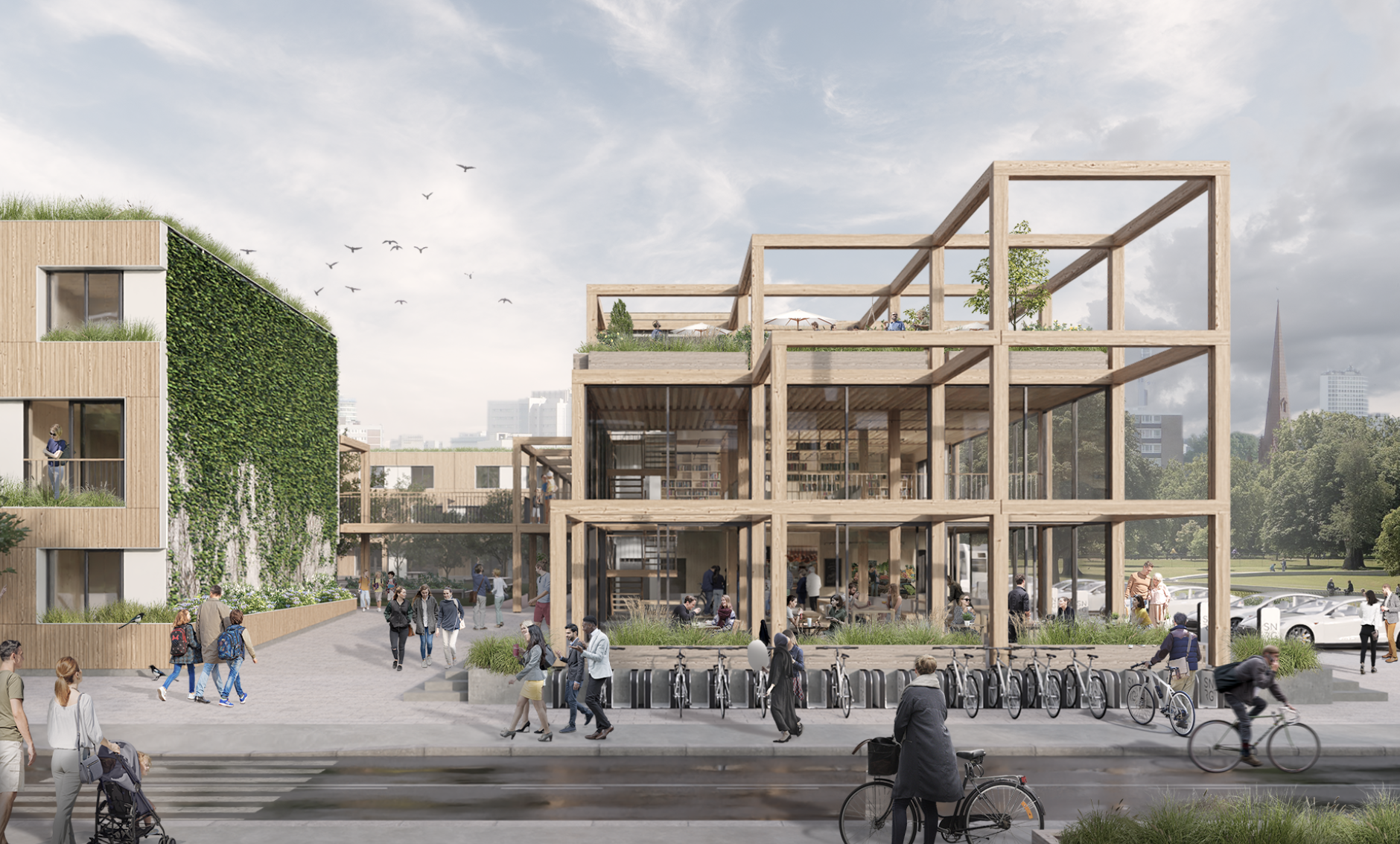Sam Hart, innovation manager at the Construction Scotland Innovation Centre (CSIC) explores the research projects, innovation initiatives and prototypes harnessing the power of homegrown timber
In the tale of the Three Little Pigs, only the house made of bricks survived the huff and puff of the Big Bad Wolf. However, like many fables and fairy tales we know these age-old stories paint a different picture from reality. In this case, there are a range of tried and tested building materials, beyond bricks, that would withstand the blow.
Timber is a prime example of that. In Scotland, as much as 85% of new homes are built with timber at their core – almost three times as many as England and Wales, where brick and block is still more popular. That said, across the UK, the mainstream use of timber in construction is growing, from housebuilding to public sector and larger commercial projects.
It seems that we are increasingly realising that we have one of the world’s best natural resources at our fingertips. As much as 13% of the UK’s total land area – around 3.23 million hectares – is estimated to be covered by woodland. And in Scotland and Wales, the proportion rises to 19% and 15% respectively.
Yet, despite the clear opportunity, industry analysis suggests that the UK is still the second largest importer of forestry products such as timber – behind only China. So far, the use of homegrown timber has been largely limited to non-structural applications in construction, such as repair, maintenance, and improvement as well as the production of fencing material or pallets, rather than for the fabric of buildings.
There is inevitably a considerable carbon cost associated with importing goods such as timber – particularly in the quantities we require – and the greater use of a naturally renewable, low carbon-embodied material could significantly boost sustainability in the built environment. A change is already on the horizon, and the way we use wood products in construction could be transformed as a result of various research projects, innovation initiatives and prototypes.
Demonstrating the possibilities
One example is the Transforming Timber project – led by Construction Scotland Innovation Centre (CSIC) with support from Edinburgh Napier University, ECOSystems Technologies, the University of Edinburgh, and SNRG – which was recently awarded £1.45m of funding from Innovate UK’s Small Business Research Initiative (SBRI).
The consortium is exploring the mainstream use of homegrown timber and is manufacturing the UK’s first two-storey modular home manufactured from engineered timber, aiming to showcase how the sustainable resource can be used to deliver a greater range of future building projects. The demonstrator home will be manufactured using a mix of mass timber forms including cross laminated (CLT), glue laminated (GLT) and nail laminated timber (NLT) components using the UK’s only vacuum press at CSIC’s 35,000 sq ft Innovation Factory in Hamilton.
With a fully functioning prototype – which will be on display at CSIC as part of a wider built environment showcase throughout COP26 – the project represents an important milestone in the widespread use of timber in construction and is a small piece of a much larger puzzle. Among a range of benefits, using more home-grown timber is expected to significantly lower costs for the construction industry – initial figures suggest a potential decrease of as much as 10% compared to imported CLT. It will also cut carbon emissions through reduced need for transportation.
Following the demonstrator project, we could also see the development of the UK’s first mass-manufacturing facility for homegrown natural resources which would be transformational in increasing the market for timber products for structural uses.
Change is on the horizon
The next stage is perhaps one of the most important: we have shown what is possible in terms of engineering, design and construction, and now we must also prove the business case for using homegrown timber. The reality is that for construction companies and those awarding contracts to grasp the opportunity, it must be both cost effective and accessible. The benefits of choosing more sustainable options must also be reflected in procurement processes moving forward.
We are on the cusp of an exciting period of transformation that will span all aspects of the built environment. The UK, and Scotland even more so, has set ambitious carbon reduction targets and the responsibility lies with us all to make meaningful change. After all, the built environment contributes around 47% of the nation’s carbon emissions and, as a key part of the problem, the sector must also be a key part of the solution.
Building a sustainable future
Post-Covid and post-Brexit, we also have a newfound need for more resilient supply chains with a UK-based ecosystem that can support the sector through challenging and uncertain times. In the wider context of the climate emergency, this means thinking about the types of materials we can make in the UK, from the UK, and the range of low-carbon systems that will be needed to create environmentally friendly infrastructure.
There is no one-size-fits all approach to building sustainably, but the greater use of homegrown timber for the manufacture of buildings is one of many potential solutions that can be adopted at scale. The more that we can do as an industry to support the transition to zero carbon, the better – whether that is through real-life demonstrators which people can experience themselves and interact with, or a library of resources outlining the scientific guidance with training modules and best practice guides.
Research has so far proven the potential of low-carbon alternative materials – including but not limited to homegrown timber – but it is collaboration and industry engagement that will help to turn ideas and concepts into mainstream reality.














